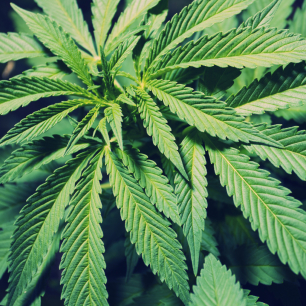The first systematic analysis of the potency of Australian cannabis has found high levels of tetrahydrocannabinol (THC) – the main psychoactive component of the drug – in samples confiscated by police from recreational users in New South Wales.
The analysis by the National Drug and Alcohol Research Centre (NDARC) at the University of New South Wales, and the Discipline of Pharmacology and School of Psychology at the University of Sydney, is published today in the international science journal PLOS ONE.
Leader of the study Dr Wendy Swift, senior lecturer at NDARC, said there is widespread international concern that cannabis containing high levels of THC is thought to be associated with an increased risk of negative mental health effects.
But while Australia has one of the highest per capita rates of cannabis use in the world there has been no routine testing or systematic analysis of cannabis potency in this country, she said. International research over the past few decades has indicated an increase in cannabis potency as measured by THC, as well as very low levels of potentially therapeutic components such as cannabidiol (CBD), which does not get users high and is thought to counteract some of the negative effects of THC.
The authors examined the cannabinoid content of 206 cannabis samples confiscated by NSW Police, from recreational users holding 15g of cannabis or less, under the NSW Cannabis Cautioning Scheme. They also examined 26 samples seized by police from large indoor and outdoor cultivation sites.
The samples seized from street users revealed high average THC content of just under 15% and low average CBD content of 0.14%. Results were similar for samples seized from indoor (known as hydro) and outdoor (known as bush) cultivation sites:
- 43% of the samples seized on the street and more than half (54%) of the samples seized from cultivation sites contained more than 15% THC – the level recommended in the Netherlands as warranting the reclassification of cannabis as a hard drug
- Nearly three quarters (74 %) of the street level cannabis cautioning samples contained at least 10% THC
- 91% of the cannabis seized on the streets contained less than 0.1% CBD, as did 85% of the samples seized from cultivation sites.
Dr Swift said that the findings had significant public health implications.
“While we have suspected for some time that cannabis in Australia contains high levels of THC, this is the first Australian analysis to demonstrate that on average, cannabis smoked by Australians is of similar high potency to that found in studies overseas and that levels of CBD, which may ameliorate some of the harmful effects of THC, are extremely low,” said Dr Swift.
“These results suggest that the profile of cannabis currently used in Australia may make some users vulnerable to mental health problems. However, while the high THC/low CBD profile of Australian cannabis has been linked to increased risks for cannabis dependence, increases in treatment seeking and increased vulnerability to psychosis, there is still little research on the impact of potency on these issues, and we need to know more about the factors that affect how people respond to the drug. It is important that we have a national routine monitoring system to assess trends in the profile of cannabis and to better understand its relationship with health outcomes.”
Publication: Wendy Swift, Alex Wong, Kong Li, Jonathon Arnold and Iain McGregor. ‘Analysis of cannabis seizures in NSW, Australia: cannabis potency and cannabinoid profile’.PLOS ONE http://dx.plos.org/10.1371/journal.pone.0070052
The cannabis potency study was funded by the Australian Government Department of Health and Ageing through the National Cannabis Prevention and Information Centre.



